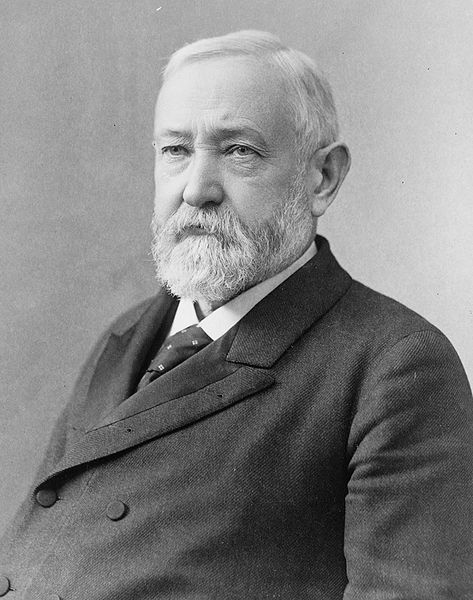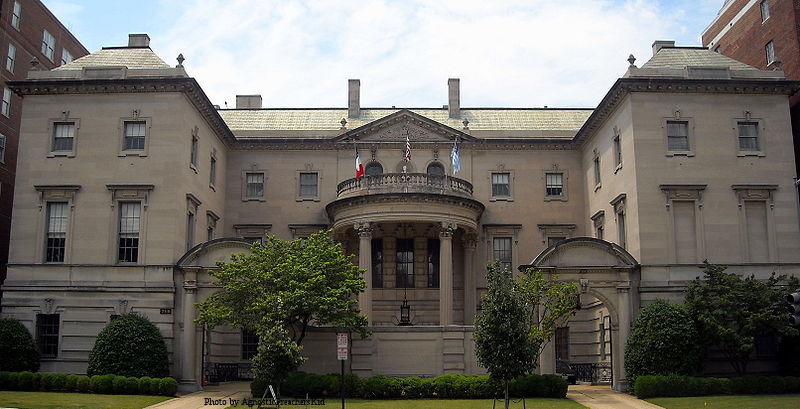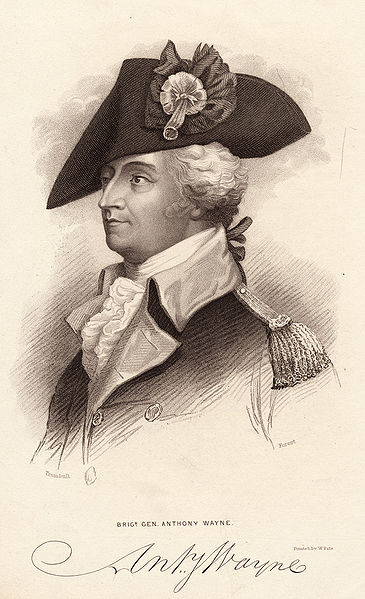The traditional elites in the United States, to preserve their aristocratic character in a world where non-aristocratic habits increasingly prevailed, formed exclusive associations in the intimacy of which they could leisurely display their high bearing and traditional customs. Writing in 1960, social historian Cleveland Amory explained:
“In our own day the Aristocrat can best be found, in sizable numbers, if not in Society at least in a Society—in particular, in the Aristocrat’s all but patented patriotic Societies like the Cincinnati, Colonial Dames, Colonial Wars, D.A.R., etc. For, while these are, as we have seen, not necessarily today’s ‘Society,’ they are assuredly, indeed even genealogically, yesterday’s—which makes them, of course, today’s Aristocracy.”(1)

Benjamin Harrison, 23rd President of the US. The Harrisons were among the First Families of Virginia.
These associations vary in origins, purposes, and admission requirements. Some perpetuate the memory of ancestors who distinguished themselves in battle. Others remember ancestors who were founders or settlers in colonial times or in the nineteenth-century period of territorial expansion, or who occupied prominent positions in colonial or republican government. Membership in these groups generally requires proof of one’s descent from such personages and a vote of acceptance by a committee or even all the association’s members.
Other organizations unite descendants of the European nobility who settled in America, while yet others cultivate elevated manners, organizing social events that reflect an urbane taste and style.
Since not a few of these associations, whatever their nature, include patriotic activities among their objectives, they are viewed by many people merely as patriotic societies. Yet there is more to them than patriotism. There is exclusiveness based on descent—which would seem to contradict the democratic inclusiveness that supposedly characterizes modern republican institutions. Herein lies a paradox pointed out by Wallace Davies in his work on the origins of American hereditary associations:
“But even an upsurge of patriotic feeling and an absorption in the American past fail to explain the hereditary form of these societies. Indeed, a renewed interest in republican institutions and the ideals of democracy…would seem offhand inconsistent with such imitation of Old World aristocracy and position based upon pedigree.”(2)
As we saw in Chapter I, the founders of the United States proscribed an official nobility with titles and political rights. Even though they were themselves aristocrats, they generally sanctioned an aristocratic culture only in the private sphere. One can surmise that, to overcome this constraint, the founders of the oldest hereditary associations aimed to obtain for these an official recognition, which would have made of them something similar to the European nobility. They went as far as the laws and culture of the United States would allow. This ultimate intent reflects in the aristocratic nature of the associations they founded.

Larz Anderson House. The Washington, DC residence of Ambassador and Mrs. Larz Anderson from 1905 until 1937, the house now serves as the national headquarters of the Society of the Cincinnati, the nation's oldest patriotic and hereditary association.
Simple membership in an hereditary association does not make a person aristocratic, especially since not all of these associations possess characteristics that could be said to render one aristocratic ipso facto. What is of interest here are the psychological motivations—not always explicit—that gave rise to many of these associations and that are generally analogous to those observed in a titled aristocracy.
We must also highlight the cultural relevance of these associations. Their salutary, although often little recognized, contribution to the cultural life of the United States continues in our day. Following the example of their predecessors who served the res publica, members promote the common good of society by means of diverse works such as endowing museums and libraries, restoring historic monuments, and supporting scholarly works on the history of the country, regions and illustrious families. In this way they preserve and foster the cultural inheritance and traditions of the United States. 
(1) Cleveland Amory, Who Killed Society? (New York: Harper & Bros., 1960), p. 67.
(2) Wallace Evan Davies, Patriotism on Parade (Cambridge: Harvard University Press, 1955), p. 47.
Plinio Corrêa de Oliveira, Nobility and Analogous Traditional Elites in the Allocutions of Pius XII: A Theme Illuminating American Social History (York, Penn.: The American Society for the Defense of Tradition, Family, and Property, 1993), Appendix I, pp. 318-319.
__________________________________
Also of interest:
Alexis de Tocqueville’s unilateral vision of America
Inherited social status tends to form an aristocracy
The United States: An Aristocratic Nation Within a Democratic State











